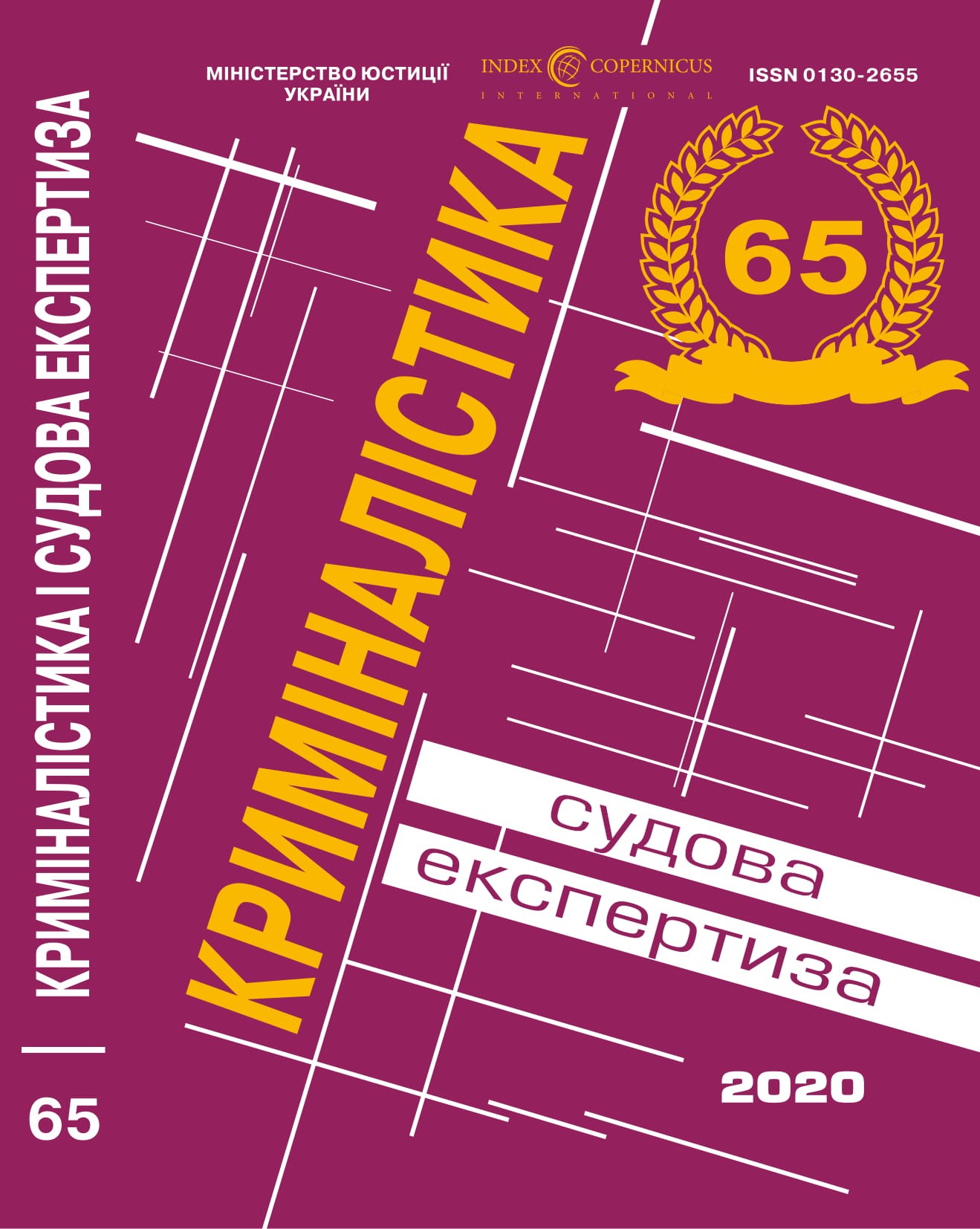
DOI: https://doi.org/10.33994/kndise.2020.65.39
Bilenchuk, V. Maslіuk, N. Svatіuk, О. Pop, O. Symkanych
In this paper are studied the possibility of using nuclear techniques, in particular, low-background measurements of the radionuclide content of natural (isotopes of natural series U / Th, 40K) and man-made origin for the identification of natural objects as non-nuclear materials. In particular, this can be the samples of soil, river sludge or rock, presented as evidential objects for court expertise.
The proposed technique explores new data on the nature of the nucleosynthesis of the Earth’s crust, the distribution and conditions of radioactive equilibrium of the daughter’s isotopes of the U / Th series. Recent studies show the ability to use lowbackground research data to establish standards for the content / ratio of the clarks of chemical elements U / Th / K, which may be sufficient identification signs of a given territory like fingerprints for a person.
This is especially relating to such objects of the environment as samples of soils, rocks, etc. that are genetically related to a given territory. Considering these environmental objects as a subject of court examination, we can talk about their important role as an evidence-based argument, which in many cases allows us to identify the origin of the “criminal element”. Therefore, the methods of identification of environmental objects and their binding to a certain territory are very important.
The paper presents the first examples of such studies on samples of soil, river sludge and rock, taken from protected areas of Transcarpathia, the influence of manmade factors on which is minimal. It justifies the choice of the minimum number of radionuclide tags of a given territory, the method of sampling to obtain the radiation characteristics of a given area, and the statistical stability of the obtained data on the content of the studied radionuclides for different series of obtained samples is investigated. Systematic studies of this kind make it possible to carry out radiation mapping of territories as the development of the ideas of Vernadsky about the importance of taking into account ground-based radiation and to get a more accurate binding of the objects under study to a specific region.
The possibility of using the nuclear dating technique in forensic analysis according to low-background measurements about the content of natural U / Th series in environmental objects is shown. The results of nuclear dating of samples of the Carpathian rocks using the uranium method are presented.
Summing up, it can be said that nuclear techniques can be used not only to analyze radioactive materials, but also to complement effectively traditional physicochemical studies of the non-nuclear materials as forensic objects.
Keywords: forensics, natural objects, nuclear attributes, nuclear low-tech techniques, dating, identification, spatial localization.










